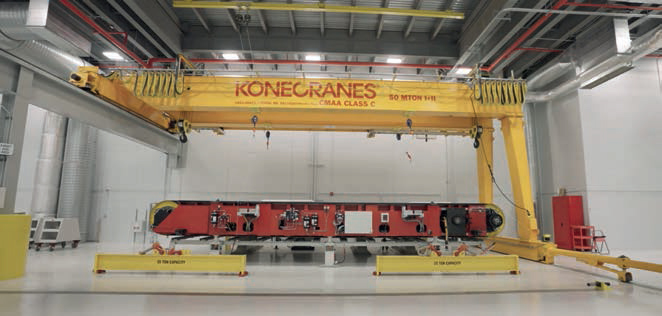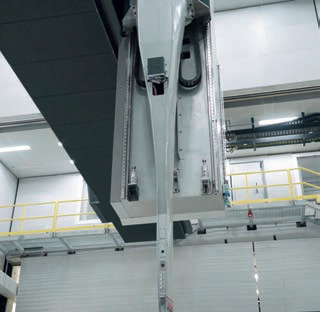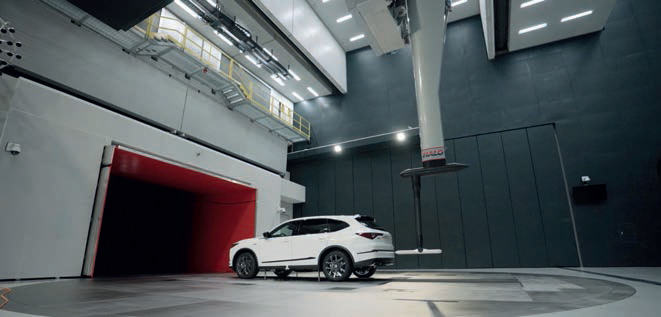Cranes at the heart of Honda's wind tunnel test facility
25 January 2023Honda’s world-leading wind tunnel test facility has cranes in the operation’s engine room.
Two cranes play key roles at Honda’s $124m state-of-theart wind tunnel facility, which was opened in Ohio in the US in 2022. The car manufacturer says the Honda Automotive Laboratories of Ohio (Halo) facility, located at the independent Transportation Research Center, is the world’s most advanced wind tunnel.
The Halo wind tunnel features what Honda calls “a modular ground plane system” that’s capable of aerodynamic vehicle testing and consists of two 40- ton modules. Both replicate real-world airflow characteristics, with the tunnel able to generate wind speeds of more than 190mph. Either module can be fitted inside the facility’s 12m in diameter turntable, depending on what researchers are measuring. The wide-belt module consists of a large belt under an entire vehicle, and is designed primarily for cars that are very close to the ground, such as high performance models and race vehicles, while the five-belt rolling road system comprises of belts under each vehicle R A tiny sensor probe is anchored by the 80-ton crane in Honda’s wind tunnel R The Traverse is 16ft tall P A Konecranes crane helps to swap rolling testbeds into the main test chamber tyre plus one larger belt running under the vehicle’s centre – it is used when testing SUVs, light trucks, or vehicles with a higher ride height. The modules can be swapped in about four hours using a Konecranes crane, and Honda changes modules about once per month and organises the test schedule to maintain that frequency.
The second crane is an 80-tonner featuring a diagnostic robotic arm that enables engineers to measure and analyse phenomena such as noise and pressure measurements. The Traverse, as it is called, is 45ft long, 16ft tall and 8ft wide and moves on rails while holding an arm with a mic or pressure sensor. It moves throughout the flow field, gathering noise and pressure measurements through pressure mapping to determine why a certain phenomenon is occurring. It has a stopping position accuracy of +/- 0.5mm and a moving math accuracy of 1.0mm
Honda says the wind tunnel’s aerodynamic test capabilities will help increase the range and performance of the company’s future full-electric vehicles, supporting its efforts “to continually advance its current position as the US’s most fuel-efficient and lowest- CO2 full-line automaker”.


